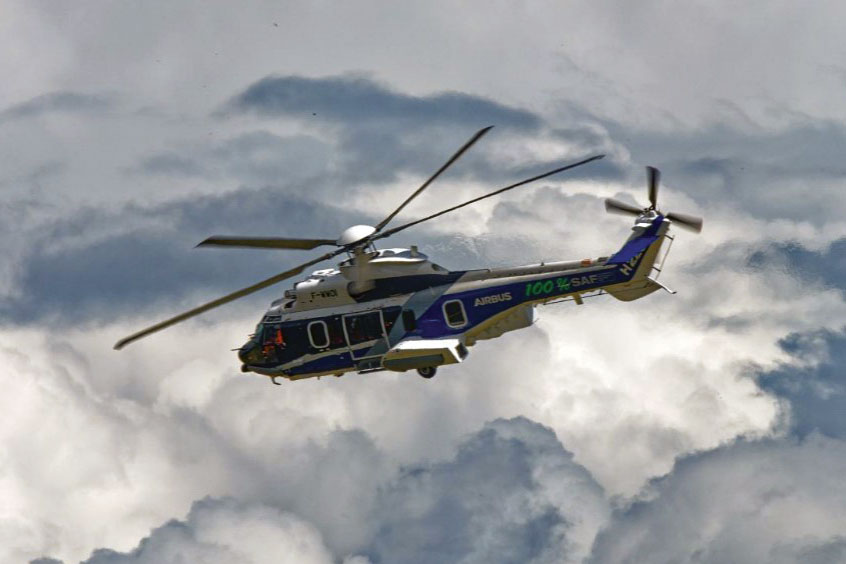Why visit ACE ’25?

An Airbus H225 has performed a helicopter flight with 100 per cent sustainable aviation fuel (SAF) powering both its Safran Makila 2 engines.
This flight, which follows the flight of an H225 with one SAF-powered Makila 2 engine performed in November 2021, is part of the flight campaign aimed at understanding the impact of SAF use on the helicopter's systems. Tests are expected to continue on other types of helicopters with different fuel and engine architectures with a view to certify the use of 100 per cent SAF by 2030.
“This flight with SAF powering the twin engines of the H225 is an important milestone for the helicopter industry. It marks a new stage in our journey to certify the use of 100 per cent SAF in our helicopters, a fact that would mean a reduction of up to 90 per cent in CO2 emissions alone," says executive vice president, engineering and chief technical officer Stefan Thome.
The use of SAF is one of Airbus Helicopters' levers to achieve its ambition of reducing CO2 emissions from its helicopters by 50 per cent by 2030. One of the main benefits of using this new fuel is that it allows the aircraft to minimise its carbon footprint while maintaining the same flight performance.
According to the Waypoint 2050 report, the use of SAF in aviation could account for 50-75 per cent of the CO2 reduction needed to reach net carbon emissions by 2050 in the air transport industry. While SAF production currently accounts for only 0.1 per cent of total aviation fuel production, this figure is expected to increase dramatically in the coming years to meet both growing demand from operators and upcoming SAF usage mandates.
In June 2021, Airbus Helicopters launched the SAF User Group with the intention of bringing all stakeholders together to work on ways to accelerate the use of blended SAF kerosene and to pave the way toward 100 per cent SAF flights for future fleets. All Airbus commercial aircraft and helicopters are certified to fly with up to a 50 per cent blend of SAF. The goal is to achieve certification of 100 per cent SAF by 2030 for Airbus commercial aircraft and helicopters.